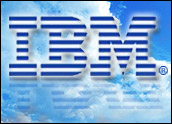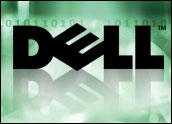
System migration efforts among IT vendors are no surprise. On a daily basis, virtually every vendor actively tries to poach competitors’ customers directly, through partners and via numerous incentive programs and product discounts.
In addition, the decision to migrate is no simple technological issue, but one affected by a numerous mitigating factors: how well a company’s IT requirements match up against its vendors’ product road maps; whether there have been upheavals in an organization’s IT management or changes in its business processes; whether a vendor’s (and its solutions’) long-term health or viability come into question.
That said, some migration programs have been more disruptive and effective than others. In the late 90s, many expected Linux to mount a significant assault on Microsoft’s desktop dominance and data center ambitions. Instead, most businesses found Linux to be a cost-effective option for moving applications from expensive Unix systems to industry standard iron.
Something to Chew On
For the past two decades, IBM competitors have promoted a variety of schemes (anyone out there remember Sun’s misnamed “Blue Away” program?) to shift mainframe customers to Unix and/or x86-based systems. The result? Mostly wins with clients shifting minor/legacy mainframe apps to cheaper platforms.
IBM certainly isn’t immune to losing customers to its competitors — no vendor is — nor is the company’s migration strategy always triumphant. However, IBM’s announcement last week that nearly 400 customers had used its Migration Factory service to shift business workloads to IBM servers and storage systems from Oracle/Sun, HP and other vendors in the third quarter offers interesting food for thought.
Not only was the number a record (quarterly) high, but those 400 customers essentially doubled the total of migrations IBM enjoyed in the first half of the year, suggesting that the pace of migrations is accelerating.
Moreover, the nearly 800 migrations to IBM systems that occurred in the first nine months of 2010 exceed by more than 200 the total number of migrations in 2009. Taking the longer view, since IBM established the Migration Factory program in 2006, more than 4,500 customers have switched to IBM servers and storage. The vast majority of those migrations involved Oracle/Sun and HP customers — more than 1,500 from Oracle/Sun and more than 1,000 from HP — to IBM’s Power Systems.
Migration Ain’t Easy
Let’s get something out of the way pretty quickly: Migrating from one enterprise server platform to another is seldom, if ever, easy. Sure, vendors make the process as logistically painless as possible and attractive pricing options can add some sweet incentives to the deal. However, virtually every migration plays host to serious what-the-frack-were-we-thinking moments at one time or another. If that’s the case, why do enterprises continue to move? And why are so many choosing IBM? There are or a number of reasons:
- Familiarity: While there is a case to be made for migrating business apps and workloads to x86-based systems (and the continuing explosion of x86 server sales suggest that many companies are doing just that), the success of IBM’s Migration Factory suggests that many migrating organizations are continuing to stick with the UNIX hardware/software they know and understand best. In many cases, that translates into IBM Power Systems.
- Performance: Moore’s Law still rules the IT landscape, so the evolutionary performance gains (and resulting business benefits) of Power Systems make IBM solutions increasingly difficult to beat and competitors’ products harder to justify. As the spread between Power and competing RISC/EPIC platform performance widens, count on enterprises to continue considering and migrating to IBM.
- Melodrama: As in a minimum of — and for which 2010 has sadly been a banner year. Customer-impacting events range from Oracle’s heady acquisition of Sun (and the resulting stampede of stalwart Sun employees and clients for the exits) to HP’s abrupt dismissal of CEO Mark Hurd (for oddly opaque ethical reasons) to the public tongue-lashing HP has suffered as its once-dear partner Oracle pursues SAP. Bottom line: IT customers have to be wondering what the heck is in Silicon Valley’s water supply, and IBM must seem like a calmly limpid pool by comparison.
Migration Factory Manufacturing Success
So, is IBM’s announcement all good news for Big Blue? Yes, for the most part, though there are a few wrinkles. The relatively modest number of migration wins for IBM’s System x (x86), System z (mainframe and storage (a bit over 100 combined as compared with Power’s 286) raise some questions, especially given the market success that the System x group has seen during 2010.
We expect that many migrations to System x, since they don’t require Migration Factory assistance, may be essentially transparent to IBM. Migrations to the mainframe are certainly affected by the steep, up-front cost of System z servers. IBM storage has delivered some notable solutions here, including its XIV and SONAS systems, so it’s reasonable to assume that they would inspire significant movement from competing storage platforms.
Those points aside, there is much here for IBM to celebrate. Conventional wisdom suggested that while flocks of customers migrating away from Sun were understandable during the company’s horribly uncertain winter, stability would spring back with the conclusion of the Oracle deal. Likewise, HP refreshing its Integrity server lines with new generation Itanium 9300 processors would halt the departure of enterprise customers for more favorable climes.
On the whole, these pronouncements turned out to be more conventional than they were wise. One thing seems certain: Unless enterprise vendors come up with more viable and innovative alternatives to Power Systems than they have to date, we expect IBM’s Migration Factory to continue manufacturing new client wins.
E-Commerce Times columnist Charles King is principal analyst for Pund-IT, an IT industry consultancy that emphasizes understanding technology and product evolution, and interpreting the effects these changes will have on business customers and the greater IT marketplace.













































Social Media
See all Social Media